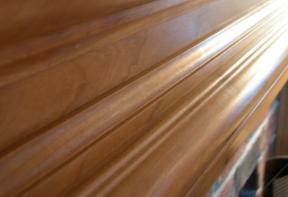How to choose and use hand planes
Get back to woodworking basics with this traditional hand tool
Every time I mention a hand plane to a group of woodworkers in my workshop, I see their eyes glaze over. People love their tablesaws, jointers and planers–generally, anything with a large motor on it. But I can’t emphasize enough how important hand tools are to get your woodworking to a level not attainable by machines alone. You’ll upgrade from a 15″ thickness planer to a 20″ model and then find you need to build a 24″-wide panel just a week later! Only a hand plane can make that wide panel truly flat. A belt sander is worth a try, but the hand plane is the real star once you know how to use it. For some more advanced techniques, such as mortise-and-tenon joinery, I believe that only a hand plane can achieve the perfect fit. Hand planes are essential tools and, in skilled hands, can achieve a level of accuracy you just won’t get with machines alone.
Types of hand planes
There are many specialized hand planes out there, but the three I recommend, if you don’t already own some, are the following:
1. No. 4 smoothing plane for flattening medium- to small-sized panels and other long-grain work.
2. Regular-angle block plane for long-grain work in tighter quarters, for more delicate work or for situations in which using the plane with one hand is helpful.
3. Low-angle block plane for end-grain work, such as trimming the ends of dovetails, finger joints and through mortise-and-tenon work.
Back to basics
A big distinction lies between a bevel-down plane, such as a No. 4 smoothing plane, and a bevel-up plane, such as a block plane. The bevel-down plane has the blade’s bevel on the underside of the blade. The angle of the plane’s frog, which holds the blade in the plane body, determines the effective cutting angle. The standard angle is 45º, which is too steep for end-grain work but works well for long-grain work except in very difficult grain-reversing situations.
A bevel-up plane, on the other hand, has the blade’s bevel on the top face of the blade. This orientation means that the angle at which you grind the blade’s bevel helps determine the effective cutting angle. The bedding angle, when added to the grinding angle of the blade, gives you the effective cutting angle. Therefore, with a 25° blade bevel in a regular-angle block plane (using a 20° bedding angle), we have a 45° cutting angle, just like in a No. 4 smoother. However, put the same blade in a low-angle block plane with a 12° bedding angle and we have a plane cutting at 37°, which is suitable for end-grain work. Grind the blade to a 30° bevel and put it in a regular-angle block plane to achieve a 50° cutting angle, suitable for long-grain in more difficult timbers.
Jump to a section
- Page 1 : Hand planing for modern woodworking
- Page 2 : What size handplane to use
- Page 3 : Basic technique
- Page 4 : Hand planing for furniture building; advanced techniques
To leave a comment, please log in












No comments